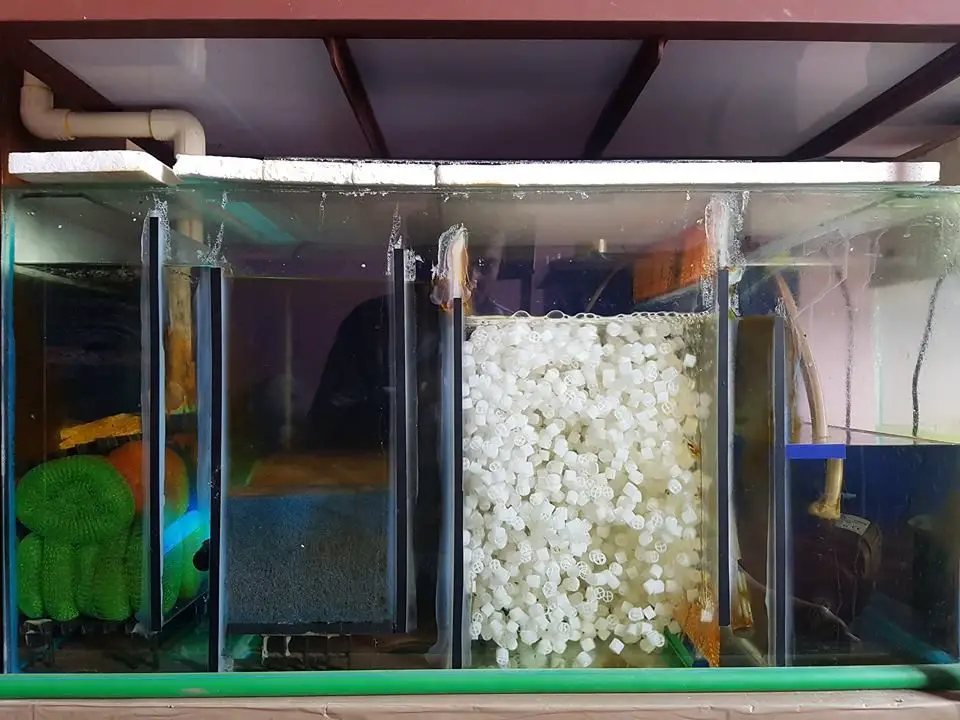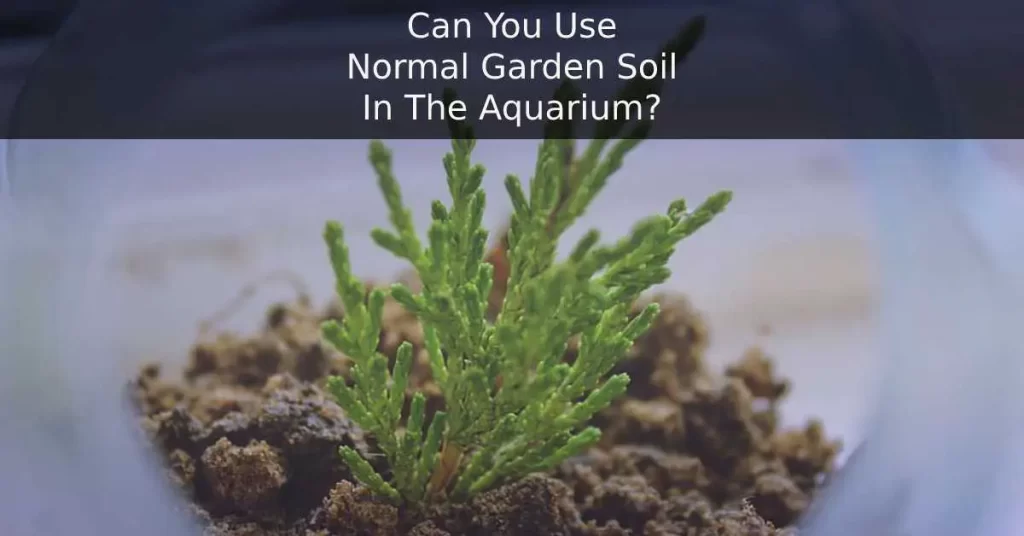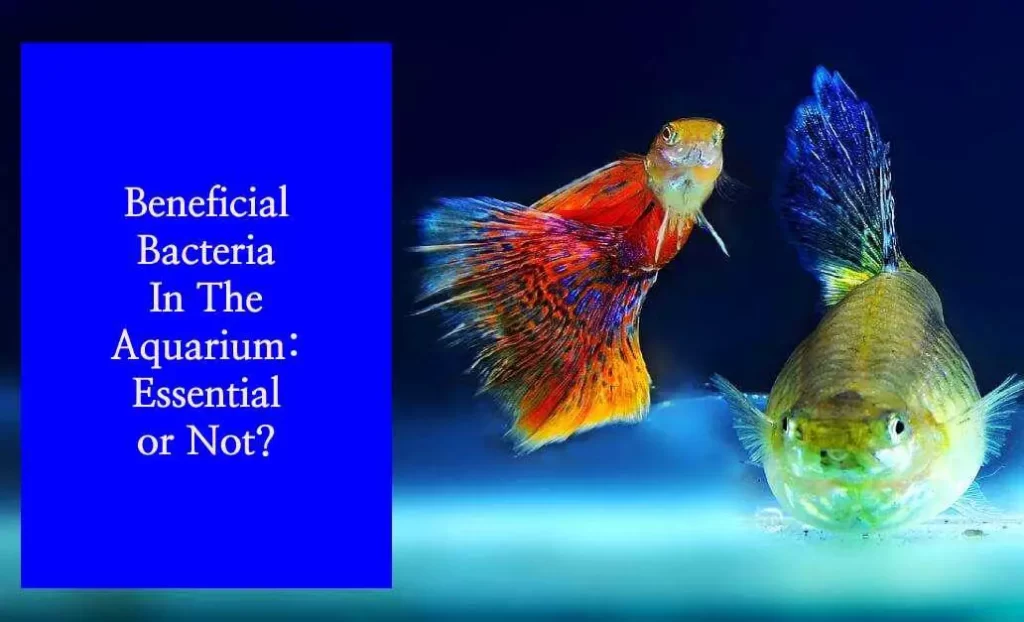Most of the fish keepers want their aquarium to be maintained beautifully clean and clear. The main motive to have an aquarium is to view the fish in a captivating tank environment, isn’t it? So, if you have the same view, then you would certainly want the same goal too, right? But, sometimes due to certain causes, your aquarium water can change its normal appearance and look yellowish. This causes the tank to look less appealing. Now, if you are currently facing the yellow water problem, then you must be wondering “Why is my fish tank’s water yellow?”
Well, the main reasons for your tank water turning yellow include conditions like a surplus of bio-load, organic compounds, tapwater, tannins from untreated driftwood, and increment diatom algae. Finding out the main cause of the yellow water will determine which step you should take next.
In this article, I will be explaining in further detail each of the reason for the yellow tank water. Moreover, I will also be describing the solutions which will help you in turning the water back to its normal state and color.
Why Is My Fish Tank Water Yellow?
The appearance of yellowish taints in the water may seem troublesome but in normal cases, it does not pose a serious threat to the fish. Nevertheless, it is still important to clear the yellow taint. And to solve a problem, you must know about the source of the problem.
I have mentioned the causes of the yellowish water in your fish tank below. So, without further ado, let us dive into the main subject matter.
Heavy Bio-Load
The heavy bio-load problem in an aquarium is usually caused due to overcrowding in the tank. Every aquarium has the specific capacity to contain certain numbers of fish according to its size, so the more fish you put together, the more space you need.
Similarly, the more fish you try to stock inside the tank, the more bio-load your tank has to contain. But, let us be honest, tanks with a larger fish population are very hard to maintain.
Hence, the heavy bio-load in return causes a chemical imbalance in the water, which further aids in turning the coloration of the water to yellow. This particular yellow water caused by the chemical imbalance from the bio-load is dangerous to the fish’s health.
An overcrowded aquarium and heavy bio-load can cause ammonia poisoning in an aquarium.
Organic Compounds
After you put your pet fish inside the aquarium, their world and lives are limited to the particular tank. It is a place where they eat, swim, excrete, breed, and finally crossover.
If you don’t care for the tank, change the water, and clean the filter often, their tank will contain a lot of organic waste and compounds. In general, the organic compounds include old fish food, fish waste, dead plants, and any other biotic materials.
Moreover, when these compounds start to decompose or rot, your water will face many problems like rising nitrate levels, ammonia levels, low oxygen, cloudy water, and yellow water.
Use Of Tap Water
Usually, most of the fish keepers do not use tap water because tap water is not considered safe for the fish. But, you can make the unsafe tap water safe for your fish.
Nevertheless, despite the risk, some fishkeepers do use tap water to fill up their aquarium. Tap water can contain tannins, iron, manganese which can cause water to turn yellowish.
Furthermore, some area’s local tap water already has a yellow tint. You have to properly analyze the water if you decide to use it for your aquarium.
So, if you use tap water in your tank and are facing yellow water coloration, then your water itself is the root of your problem.
Tannins From Untreated Driftwood
Tannins are one of the major causes of yellow water coloration in your tank. So, what are the tannins? Well, tannins are naturally occurring bio-compounds that are found in stems and wood. Many fishkeepers like to keep driftwood as decor inside their aquarium.
Moreover, The problem occurs when you use untreated driftwoods because they contain tannins in them. Hence, if you have installed untreated driftwood inside your aquarium, then you can have the yellow coloration of water due to the tannins.
Unwashed Substrate
If you have recently set up your aquarium while using the unwashed substrate, then water inside of your tank can be a bit cloudy. You can find out better information on cloudy water in an aquarium with its causes and prevention.
Due to the unwashed substrate, various tiny debris consisting of different colors will float around in the water.
Furthermore, these dust particles cause the water inside your tank to change to various colors including yellow.
You might also be interested in my article about Guide to Different Types of Aquarium Substrates.
Increment In The Diatom Algae
If the above-mentioned causes are not the reason for your fish tank’s yellow water coloration, then you probably have the problem of Diatom Algae in your tank.
Moreover, the diatom algae are one of the major algae that will cause your tank to look either brownish and yellowish.
Furthermore, these algae thrive in an environment where nitrate and ammonia are available in an abundance. Your fish babies are safe from these algae as they pose no threat to their health. But still, diatom algae certainly decrease the beauty of your tank.
Find out more about algae control in my next article ‘How to Grow Black Beard Algae (BBA) Guide’.
How Do You Fix The Yellow Water In Your Fish Tank?
Till now, you have been able to recognize the causes of your fish tank’s water turning yellow. Moving forward in this segment of the article, I am going to explain how you can solve the yellow water problem of your fish tank.
The following are the ways you can fix the yellow water in your fish tank:
Avoid Over Stocking
If you have a habit of overstocking your aquarium with fish, then you must stop. The yellow water coloration is one of the many negative outcomes of the overstocking of fish.
Furthermore, you can also face difficulty in tank maintenance, an outbreak of disease, loss of fish, and severe decrement in the life quality of your pet fish.
By avoiding overstocking, it will help you to prevent other tap water-related problems like cloudy water, brown water, higher nitrate and ammonia levels, etc.
Get A Filter Or Make Sure Yours Is Running Properly
Another great prevention of yellow water in your fish tank is to get a good and proper filter. A good filter cleans debris from the water, aids to control the nitrate and ammonia levels aerates the water, and maintains the nitrogen cycle.
Moreover, make sure your filter is running properly in the tank. If your tank still faces yellow water coloration even if you already have an active filter, then there are various problems like technical faults, unsuitable filters, poor quality, etc.
You can also use carbonation filtering like activated carbon charcoal in the water. The carbon will suck up dyes and even odors. Here is a clever idea, you can combine both the mechanical filter and carbon process.
Furthermore, special carbon-impregnated sponges for the sponge filters are available in the market. Otherwise, you can manually add the carbon in the filters by placing the charcoal in a net bag inside the tank for a week.
In the case of the sponge filter, I recommend the Hikari Bacto-Surge High-Density Foam Filter. Another best option for the filter is the Aquapapa Bio Sponge Filter for Fish Tank Up to 60 Gal, 3-Pack (L). Both of these sponge filters are considered among the best and are quite popular among the fish keeping community.
Pre-rinse Wood And Substrate
As you may already know now, that the untreated driftwoods contain tannins and the unwashed substrates consist of debris. Both the tannins and the debris are probable causes of yellow water in your fish tank.
So, what should you do to prevent it? Pre-rinse them of course, it is as simple as that!
By pre-rinsing the driftwood and the substrates for a small amount of time, you will get rid of the debris and the tannins. Without the tannins and debris, there will not be any color changes in the water.
Hence, you will be able to prevent getting yellow water in your fish tank.
Get Rid Of Rotting Material
A lot of things inside the aquarium can rot in time. Mainly organic compounds like fish food, dead plants, dead fish, fish poop, etc. When these compounds rot, they can disturb the nitrate and ammonia levels of the tank as well as increase bacterial bloom and different grimes.
As a result, water quality decreases, and you get problems like yellow, green, brown, and cloudy water. So, it is highly recommended you takeout any removable substances as soon as you see them in your tank.
Although, there are some instances of having beneficial bacteria in the aquarium. Learn about what they are and why they are essential.
Routine Water Change
Routine water change is well recommended by any experienced fishkeeper. Water change helps your tank to keep its phosphates and nitrate levels at bay.
This further results in the prevention of odorous, unpleasant, unsightly aquarium environment like the one with yellow, brown, or green waters.
But, if you want to change the water, then be sure not to change the whole volume because this will cause many issues related to your fish’s health. Furthermore, they will have a hard time adapting to new water parameters. So, change only up to 10% of the water from the tank.
By doing this, you are in a way introducing new elements and minerals to the water environment in a small portion. In addition, this process will have a positive impact on your fish’s health and the tank environment.
Get into more detail about this subject matter from my article about ‘Is Too Much Water Change Harmful For Your Fish: How To Do It Safely’.
Diatom Algae Filters And Cleaning
Algae bloom occurs in your tank when the nutrients like nitrogen and phosphorus levels in the water build-up. Diatom algae are similar to brown algae that cause your water to look yellowish.
Now, as mentioned before, your fish face no threat from the algae. But, still, the appearance of your tank significantly deteriorates.
Thankfully, there various ways to get rid of algae in general and they are as follows:
- UV sterilizer filters- You may use AA Aquarium Green Killing Machine 9 Watt | Internal UV Sterilizer System with Power Head. It helps to kill algae, bacteria, and waterborne pathogens. It is also easy, submersible installation.
- Scrubbing the algae- I recommend Aqueon Algae Cleaning Magnets Glass/Acrylic Medium. It lasts long as well as it is very affordable.
- Routine water change
- Freshwater or aquarium salt
- Keeping algae feeding aquatic pets in the tank (recommended breed Amano shrimps and Trochus snails )
- Reverse osmosis in water
- Increase water flow
You might also want to check out our article about:
- 30 Best Algae Eaters For Freshwater Aquarium
- How To Get Rid Of Algae In Fish Tank Naturally?
- What are the Benefits of Aquarium Salt?
Is There An Easier Way To Clear Out Tank Water?
Apart from the ones mentioned in the above segment, there is another way you can clear out the yellow water. The method that I am going to mention to you can be considered as one of the easiest ways to clear the yellow water and is well preferred by many fishkeepers.
In addition, it is also safe to use as it does not affect the health of your fish as well as the aquatic plants.
Well, I am talking about using water clarifiers to remove yellow water. The water clarifiers work by bonding the various tiny particles in the water causing the yellow water to turn into larger particles. Thereafter, these particles are easily filtered out by your tank’s filter.
There are a variety of water clarifiers available in the market. But, I recommend the use of the API ACCU-CLEAR Freshwater Aquarium Water Clarifier that you can easily get from Amazon.
Why You Should Not Clean The Entire Tank At Once?
“You should not clean the entire tank at once”, as a beginner fishkeeper you will often get this advice from other veteran fishkeepers. Fish just need sufficient time to adapt to any type of change in their environment.
So, when you start cleaning the entire tank at once, you are suddenly disrupting the nature of the whole environment in the tank.
Hence, you should place intervals between cleaning the specific parts of the aquarium like you should not clean both the substrate and the filters at the same time as it will lead debris and particles into free motions causing problems like yellow water.
Furthermore, by keeping an interval, not only will you let your fish adjust to the changes, but your biological colony will recover as well. I recommend you keep a gap between weeks while cleaning different parts of the tank.
I have also written an article about How To Clean And Maintain Aquarium? – The Easiest Way. Check it out!
Similarly, you might also be interested in Why Do Fish Tanks Get Dirty So Fast – How To Clean And Maintain Tanks.
Is Having Yellow Water In An Aquarium Harmful For The Fish?
As of now, from the previous segments of this article, you must have known that yellow water has a variety of causes from which they originate. So, due to this, the effect of yellow water on your fish’s well being totally depends on the type of their cause.
The yellow water coloration in the fish tank caused by the heavy bioload and decomposing organic compounds will have an unhealthy effect on both the fish’s health and the tank’s environment as the bioload and organic compound have been known to cause not only yellow water but dynamism in water parameters, chemical balance, and bacterial bloom.
While on the other hand, yellow water coloration caused due to the likes of tannins, algae, and substrate will rarely affect the fish in any negative way.
Frequently Asked Questions
How Do I Get Rid Of Algae In My Fish Tank?
Follow the steps below to get rid of algae in your fish tank:
- Clean the substrate with a siphon for removing the debris and wastage.
- Clean the filters but avoid using soap water.
- Increase the flow of the filter.
- Feed fish only once a day.
- Use nitrate remover (API NITRA-ZORB Aquarium Canister Filtration works best in this case).
- Remove phosphate from use.
- Avoid the use of any supplements or fertilizers.
- Perform routine aquarium maintenance.
Is Cloudy Water Bad For My Fish?
Cloudy water is a common name for the bacteria bloom. The bacteria which grow during this period of cloudiness are not harmful to your fish. Usually, cloudy water occurs from 2 to 4 days after you add fish to the aquarium. The condition usually fades away with time.
How Do I Oxygenate My Fish Tank?
Making sure your fish in the tank are getting the required levels of oxygen is one of the primary concerns for fishkeepers. Hence, the following are steps that can help to oxygenate your fish tank:
Pour Water From A Fair Height
Here is the proper step to pour water from a height in the tank:
- Take a clean jar and fill it with the water from your aquarium.
- Hold the jar above the tank and pour the water slowly.
Use Ice Cubes
Ice cubes are handy to oxygenate your tank when the oxygen levels drop due to the warm temperature in the tank. Use a zip-closed bag to put in the ice cubes, then hold the bag inside the tank for a specific period of time.
A Large Amount Of Water Change
Another handy way to increase the oxygen levels of the water in the aquarium is replacing approximately 50% of water with fresh water. The freshwater helps replenishes the dull old water from the tank.
Use Hang On Back Filters
Hang on back filters or HOB filters are handy when it comes to increasing the oxygen level in your aquarium. The water that flows down from these filters helps to oxygenate your aquarium.
Penn-Plax Cascade 600 Submersible Aquarium Filter cleans up to 50 gallons fish tank with physical, chemical, and biological filtration. It works well in the aquarium and is quite affordable.
Air Pumps
Well, the name pretty much tells the whole story, isn’t it? The air pump’s sole purpose is to increase the oxygen levels in the tank. It is a very effective and straight forward approach to oxygenate your fish tank water.
HITOP Powerful Aquarium Air Pump (2-outlets, 110GPH) with accessories and adjustable oxygen pump is suitable for 20 to 100 gallons fish tank.
Fountains
The fountain is a good solution for oxygenation, but it is applicable only in the ponds. So, if you are keeping fish in ponds on your property, use a fountain.
Use Spray Bar
The function of the spray bar is to distribute the filtered water directly from the filters and spread it through the surface of the water. This helps the water to gain more space to aerate, hence increasing the oxygen levels.
Find out more about the topic in my article about ‘How To Maintain The Oxygen Level In Aquarium?’.
Conclusion
Yellow water coloration of the fish tank water is a common problem faced by the fishkeepers. Apart from yellow water problems caused by bio-load and organic compounds, most of the other cases do not pose a serious threat to your fish.
Nevertheless, I still recommend you to take proper measures of the solution to solve yellow water coloration despite the nature of their cause.
Aquariums are meant to be eye-catching. However, having a grimy and grubby appearance from the yellow water deteriorates your tank’s and its inhabitant’s grandeur.
Hope this article has been useful for solving your problem. If you have any questions, feel free to mention them in the comment box below.
Related articles:






